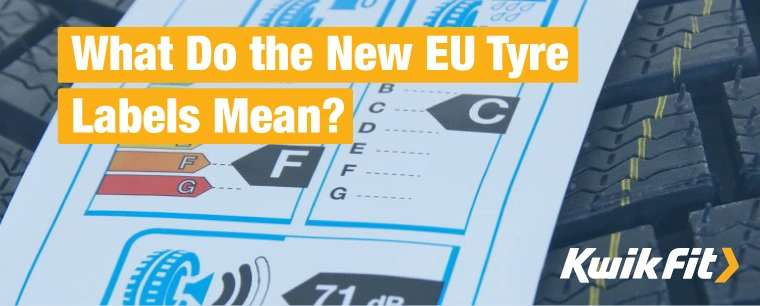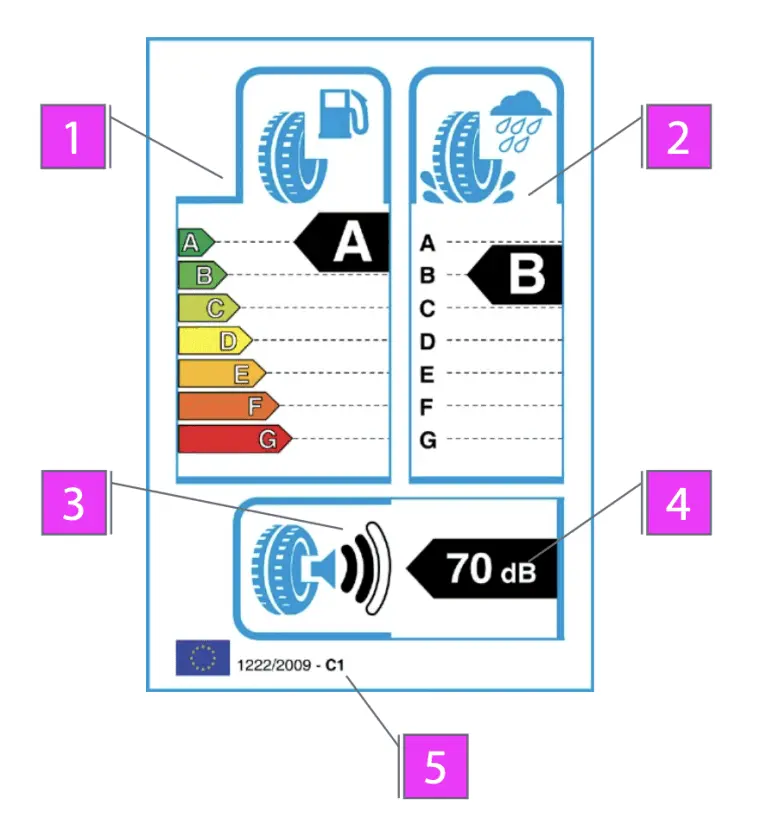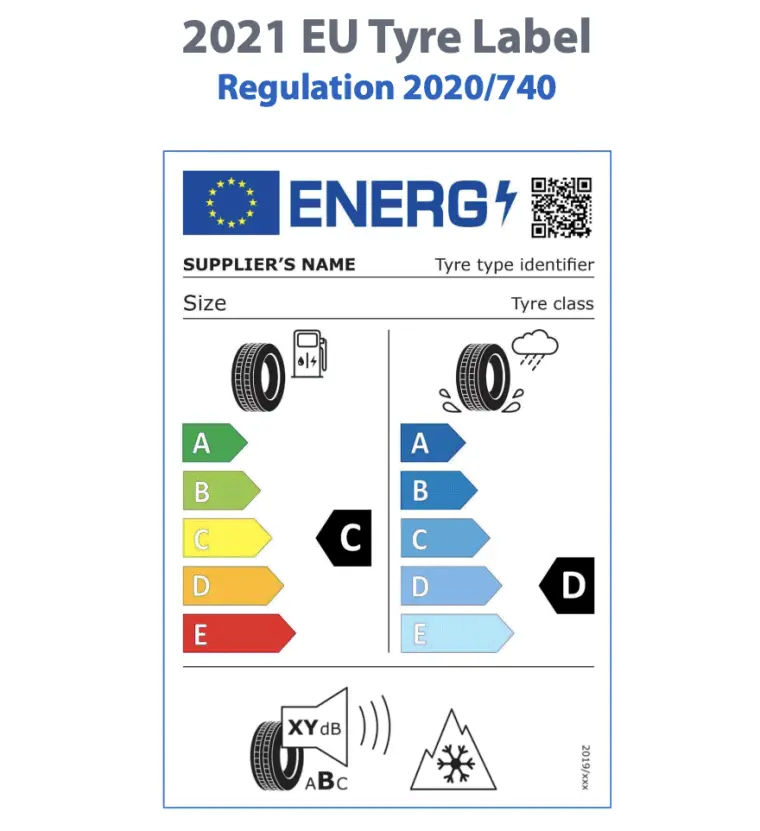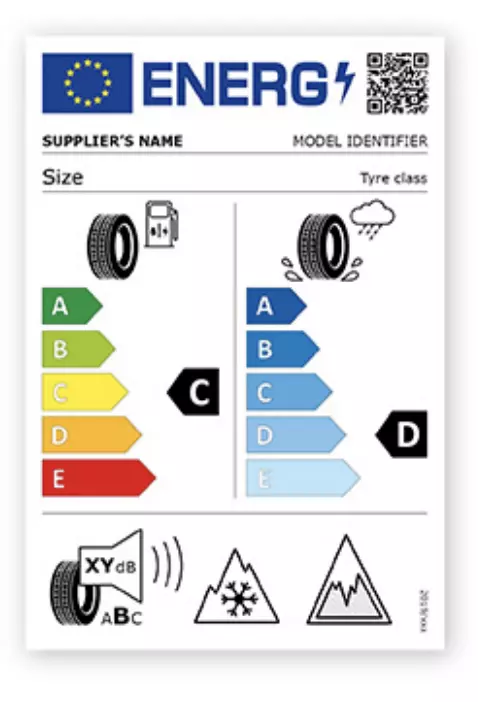What Do The New EU Tyre Labels Mean?
Jack Dreyer | Wednesday 19th October 2022 11:00am

Information labels have been shipped with all new tyres since 2012 and look similar to the EU labels for household appliances – such as for energy efficiency with light bulbs or fridges.
But, as of the 1st May 2021, tyres began being shipped with updated labels displaying different markings than what we were used to previously.
If you haven’t familiarised yourself with these labels yet, allow us to introduce you. But, before we go through what the labels mean, we should look at why they’re being used.
What’s the purpose of the EU tyre labels?
Fundamentally, the project of labelling is an attempt to create transparency at every level of product buying. Every link in the product chain has an impact on our environment and people nearby, so being able to clearly see that a particular product uses more energy or has a particular environmental impact helps buyers make a more informed decision when they go to buy new tyres.
Similarly, labels need to display vital information about certain traits, benefits, or dangers of a product. If these are visible at a glance rather than in the small print of the product manual then it makes choosing the right product for your needs significantly easier.
The old EU tyre labels
Before May 2021, the EU tyre label gave motorists information on the key areas of tyre performance”
- Rolling resistance (AKA fuel efficiency)
- Wet grip
- Exterior noise compliance indicator (with 1, 2, or 3 curves)
- Exterior noise decibel measurement
- Tyre classification (C1, C2, or C3)
Rolling resistance
Vehicle running costs are one of the key components that drivers think about when they purchase new tyres for their vehicle. Therefore, fuel efficiency features strongly on both the old and updated labels.
The main difference is that the new labels offer a simpler way to show a tyre’s fuel usage. On the old labels, seven bands are used to show this but it has been reduced to five on the new labels, making it easier for consumers to understand and compare the values.
The wet grip rating
The wet grip rating is an important piece of information that can be found on both the old and new EU tyre label.
This shows which tyres provide the best safety performance in wet weather conditions. The old tyres labels have lots of different bands for this category which makes it quite difficult for customers to choose which tyres they need. On the new tyre labels, these categories have been cut down.
External noise levels
As drivers, we spend a lot of time in our cars. For this reason, vehicle comfort is important when choosing tyres. The external noise level can have a crucial impact on vehicle comfort levels.
The volume of noise created by your tyres can be significantly reduced. Rolling resistance plays its part in the external noise created by tyres and also gives better fuel efficiency. This is a metric across both old and new tyre labels.

As categories, these make sense, but they also contain some odd quirks. The rolling resistance (which also means the tyre’s fuel efficiency), for example, skips category D for passenger cars – and having a wide band also means it’s much easier for things to be ‘ok’ in, say, category E where in reality it’s best avoided.
The new EU tyre labels
While the label may look the same at first glance, there are several notable changes – particularly when it comes to how information is provided on the tyre label.

Rather than the relatively ambiguous information before, the new labels now allow you to immediately see a supplier’s name, as well as different identifying information for the tyre. What’s more, the labels can be set up with QR codes to take people to specific web pages so that more information can be found.
The rolling resistance & wet grip ratings now show as a scale of A-E, with F & G having been combined into E – the D category is also no longer skipped for passenger cars. The noise rating has been condensed into a decibel and category (A, B, or C), and, importantly, some crucial traits of a tyre have been added. These are ‘Snow Grip’ and ‘Ice Grip’.
In the EU Label shown here, the ‘Snow Grip’ is the symbol with the snowflake on it, while the ‘Ice Grip’ is the symbol of a mountain peak.
These are often traits that would be advertised with tyres, but this labelling helps to quickly display whether a tyre has a trait or not, as well as to standardise what each of the traits actually mean.
If a tyre doesn’t have either of these traits, the area of the label will appear as blank.

The QR code
QR codes have been used to encourage consumer behaviour for some time now – usually in the form of deeper engagement with brands through ‘unlocking’ videos and other media.
Considering most modern smartphones are able to scan QR codes with just their cameras, the inclusion of QR codes for a functional product makes it much easier to see deep information on a product.
It’ll take a little time for manufacturers and suppliers to set up the QR codes, but it’s set for an exciting transition both for buyers and installers.
Need new tyres?
If your vehicle needs new tyres, whether summer, winter, or all-season, put the replacement in the hands of your local Kwik Fit - the experts will have the right tyres on in no time.
And, for more tyre advice and motoring news, be sure to keep up to date with the Kwik Fit blog.
Any facts, figures and prices shown in our blog articles are correct at time of publication.
Featured Articles
Is it Illegal to Drive With One Headlight?
Saturday 19th July 2025
Wondering if it’s illegal to drive with one headlight? Learn about the safety risks and penalties of illegal blown bulbs and why you should fix them promptly.
Air Con in EVs & Hybrids: Experts Answer Your Questions
Monday 30th June 2025
Does air con drain EV batteries? Can you use the air con while charging an electric car? Find out the answers to these questions & more from Kwik Fit’s experts.
Why Is Your Car Making a Noise? Fixes & Tips
Friday 13th June 2025
When your car starts making unexpected noises, it can certainly be quite disconcerting; it may be nothing to worry about, but here’s what you need to know.









